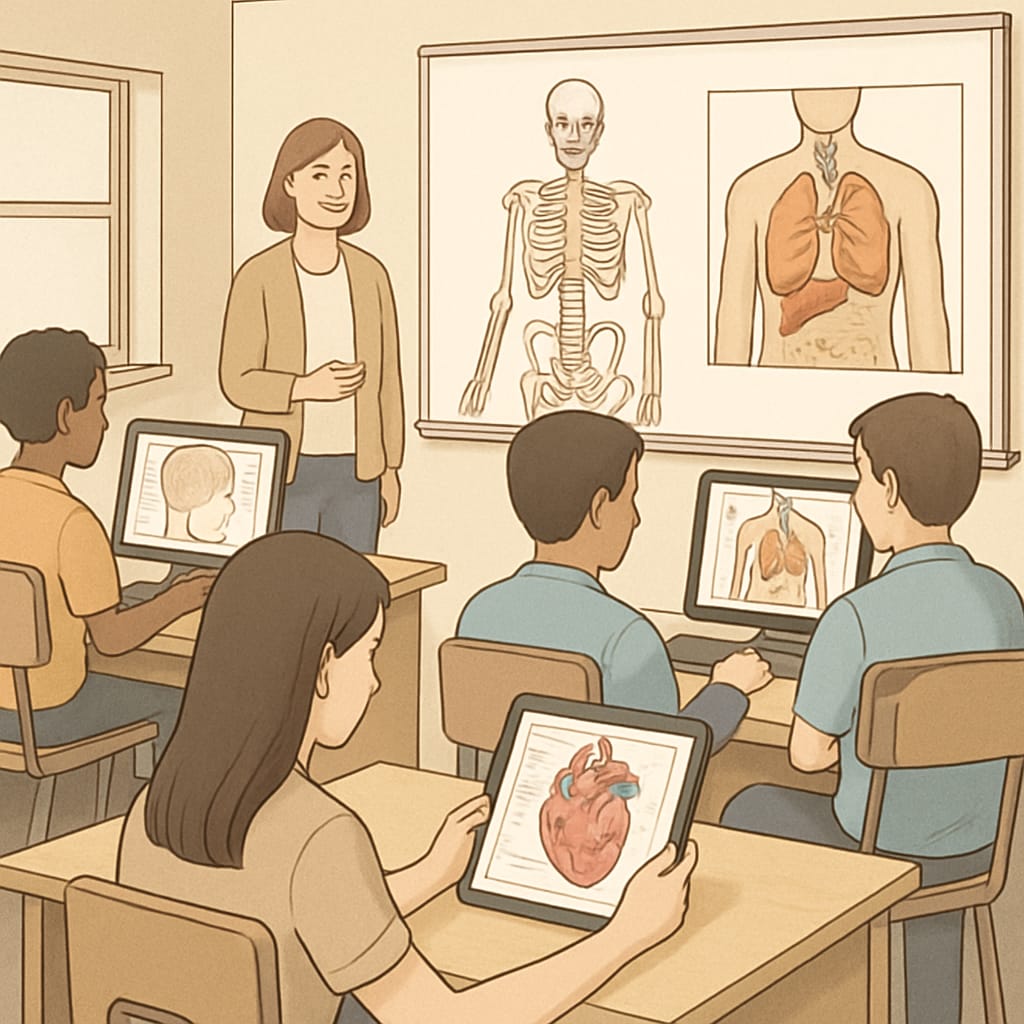Medical education has traditionally been reserved for those pursuing careers in healthcare, leaving individuals with non-medical backgrounds with limited access to structured learning resources. However, as the importance of health literacy and interdisciplinary thinking grows, educators have begun exploring innovative ways to introduce medical knowledge to students, including through K12 education systems. By leveraging online courses, tiered learning frameworks, and accessible content, non-medical professionals and students can benefit from an education that fosters health awareness and critical thinking from an early age.
Challenges in Medical Education Resources for K12 Students
One of the primary hurdles in introducing medical education to K12 students is the polarizing nature of existing resources. On one end, highly technical content is geared toward medical professionals, making it inaccessible to younger learners without foundational knowledge. On the other end, overly simplified materials fail to engage more curious and advanced students. This gap highlights the need for a structured, tiered approach that balances depth and accessibility.
For example, while platforms like Khan Academy offer introductory courses in health and medicine, they may lack the interactive and age-specific content needed to resonate with younger learners. Additionally, traditional textbooks often overlook emerging themes such as public health, mental health, and the ethical dilemmas surrounding medicine—topics that are increasingly relevant to today’s educational landscape.

Solutions: Tiered Learning Systems and Accessible Online Courses
Building a tiered medical education system could address these gaps effectively. This approach involves structuring content into progressive levels based on age, background, and learning objectives. For K12 students, introductory modules could focus on basic anatomy, first aid, and nutrition, while more advanced levels might explore genetics, disease prevention, and medical ethics.
Online platforms are uniquely positioned to support this model. Resources such as Britannica’s Medicine Section and interactive learning tools like virtual dissections or health-related games can make complex topics engaging for young learners. Additionally, tying medical concepts to real-world applications—such as understanding the spread of diseases or the importance of vaccinations—can enhance retention and practical application.
Key elements of a tiered system might include:
- Interactive tools like quizzes and simulations to test knowledge.
- Age-appropriate content that scales in complexity.
- Collaborative projects encouraging group discussions on medical ethics or community health.

Benefits of Medical Education for Non-Medical Backgrounds
Incorporating medical education into K12 curricula benefits students in several significant ways. Firstly, it fosters health literacy, enabling students to make informed decisions about their well-being and understand societal health challenges. Secondly, it nurtures interdisciplinary thinking, bridging fields like biology, ethics, and technology to create a well-rounded perspective. Finally, early exposure to medical concepts can inspire future interest in healthcare careers or related fields.
For non-medical backgrounds, these educational experiences provide value beyond personal knowledge. They encourage critical thinking and problem-solving skills, which are applicable in various professions and everyday life. As a result, students grow into more informed citizens who can contribute meaningfully to discussions on public health and societal issues.
Readability guidance: To ensure accessibility for readers, use concise paragraphs, clear transitions, and avoid overly technical jargon. Introduce specialized terms with brief explanations, and leverage lists or visual aids to summarize complex ideas.


